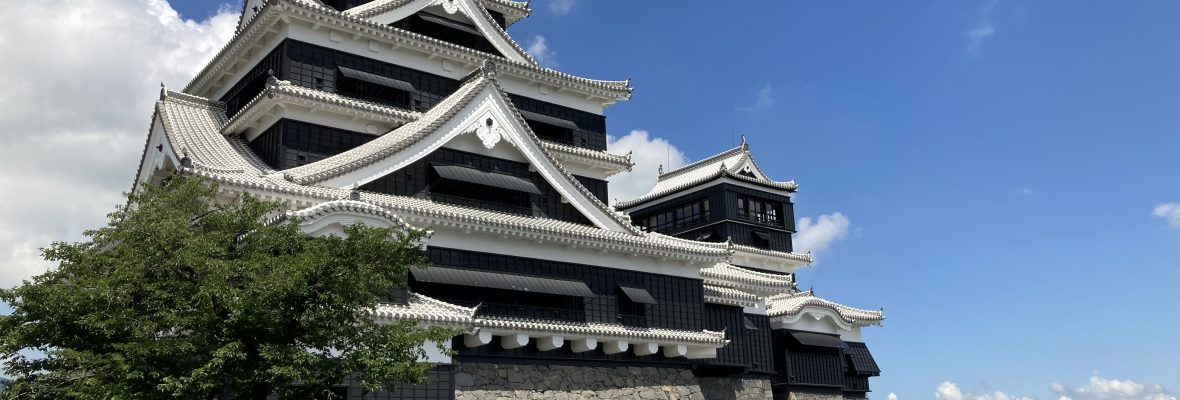The Rise and Fall of the Ryuzoji Clan and the Bear of Hizen, Ryuzoji Takanobu. 龍造寺隆信 by Stuart Iles
Part 1 – The beginning of the end for the once great Shoni clan.
There were countless regional lords who tasted a smidgen of success, although for most aspiring warlords to become number one, this success was short lived. Ryuzoji Takanobu fits this picture perfectly. Before we dive deep into Kyushu local history, I would like to share an interesting tidbit popped up while I was researching this topic. A Japanese online source mentioned that there were only two battles where a samurai general was beheaded in the middle of a battle. I was a little surprised, and if any reader can think of another instance, please let me know. The first beheading was at the Battle of Okehazama (Imagawa Yoshimoto) in 1560 and the other at the Battle of Okitanawate (Ryuzoji Takanobu) in 1584. Coincidently, the two lords had three things in common. At the time of their defeat, they had immensely superior military numbers compared to their enemy, they were both riding in a palanquin (Takanobu rode in a basket) and they were both fat. So, how did Takanobu, who was famously feared as the “Bear of Hizen,” end up defeated and headless? Let’s have a look at his life and the story of the Ryuzoji clan of Hizen (Saga Prefecture), Kyushu.
From around the beginning of the Kamakura period (1185–1333), three clans administrated all of Kyushu. Shoni (Muto) clan controlled Chikuzen, Hizen and Buzen provinces from the Eastern Capital of Dazaifu. Otomo controlled Chikugo, Higo and Bungo provinces from Oita, and Shimazu controlled Satsuma, Osumi and Hyuga provinces from their base at Kagoshima. The Ryuzoji were retainers of the Shoni clan based in Hizen.
Much like many other famous Sengoku daimyo (lord), Takanobu began his life in obscurity. At seven years old he was left in the care of a Buddhist temple in Hizen, named himself Engetsu and expected to become a Buddhist monk after his studies. Takanobu’s family line, as far back as I can find, was known as the Mizugae linage. The clan was located in the central plains of Hizen (Saga Prefecture). Mizugae castle was located just south of where Saga castle ruins now sits. Takanobu’s great grandfather, Iekane was the 5th son in the family line, served as a low ranked retainer of the Shoni, so Takanobu was not expected to lead the family. However, in 1545 when Takanobu was 17 years old a dreadful incident occurred that nearly destroyed the whole Ryuzoji clan in an instant. So, let’s have a look at the lead up to this near disaster.
Ryuzoji of Mizugae were headed by Ryuzoji Iekane (1454-1546), they were retainers of the Shoni clan along with a few other clans including Nabeshima and Baba clans. Muto Sukeyori was assigned as Deputy Assistant Governor of Dazaifu in the Kamakura period (1185-1333). Over time, the Muto family name died out, simply becoming known as the Shoni. By the middle of the following era (Muromachi, 1333-1568) Shoni had been slowly losing their status and influence in the royal court in Kyoto. To make matters worse, back in Kyushu, Otomo, Shimazu as well as the Ouchi from Suo, western Chugoku (now Yamaguchi) had been extending their influence and power in the region. What brought about this decline of influence in Kyoto for the Shoni?
Shoni Sukemoto (1489-1536) was the 16th head of the Shoni clan, and he was lucky he ever made it into adulthood. As a boy, he was hidden away by loyal Shoni retainers in Hizen after his father and elder brother were assassinated on orders from the Muromachi bakufu. The two Shoni leaders were killed by rival Ouchi retainers. This was not war, per-se, but a revenge killing. Soon after, the Ouchi marched into northern Kyushu and claimed the land for themselves. The Kyoto royal court was powerless to do anything and the bakufu appeared not to be interested in Kyushu politics. The jewel of northern Kyushu was the rich trade port of Hakata and the Eastern Capital itself, Dazaifu which now fell under the authority of the Ouchi clan. From this turn of events, one could assume that the royal court wanted the Shoni out of Dazaifu and Hakata replacing them with the Ouchi. So, at the beginning of the 16th century the Shoni clan and its army were left defeated and only survived in name through the young boy Sukemoto. Resistance of further land expansion was left up to Shoni retainers, Ryuzoji, Nabeshima and Baba. When Sukemoto entered adulthood, he attempted to revive his clan once more. Loyal retainers of the Shoni rallied and Sukemoto was able to steadily grow his influence and power. Seifukuji castle in central Hizen became the new home castle for the clan.
End of part 1.


You must be logged in to post a comment.